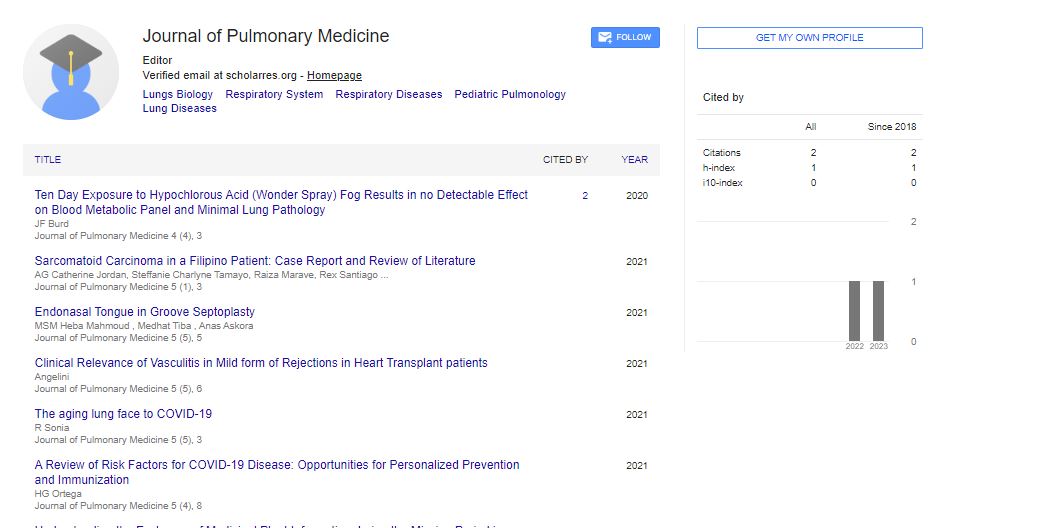Commentary, J Pulm Med Vol: 5 Issue: 4
Emphysema and Intrabronchial stents: Select the Right Patients!
Gunnar Hillerdal*
Department of Lung Diseases, Gävle Hospital, Sweden
*Corresponding Author: Gunnar Hillerdal Department of Lung Diseases, Gävle Hospital, Sweden, E-mail: gunnar.hillerdal@regiongavleborg.se
Received: August 17, 2021 Accepted: August 31, 2021 Published: September 07, 2021
Keywords: Emphysema and Intrabronchial stents
Commentary
One way endobronchial stents, which allows air to be exhaled but not inhaled, can if introduced into an ephysematous destroyed pulmonary lobe significantly, improve the patient´s pulmonary function. The whole lobe must be excluded from ventilation, i.e. all the lobar bronchi must be closed and there should be no interlobar communication. This results in a lobar atelectasis or at least a considerable size reduction of the diseased lobe. We recently published our long term results from a small sample of highly selected patients, i.e. patients with a high degree of heterogeneous emphysema [1]. Of 35 patients 21 were successful, i.e. had an improvement of FEV1 sec of more than 15%. Their improvement was in the mean 59%. Their 5 year survival was 75% while half of the “failures” were dead by then.
The emphysematous process continued, and thus the yearly loss of FEV1 sec was the same as before the procedure, but now from a much higher level, and in most cases this figure was still higher after 5 years than before.
Some confusion still seems to remain about the mechanisms, probably due to the terminology used. The hyperinflation of a destroyed lobe is due to destruction of its elastic fibers, and if larger than the surrounding lobe (s) this means that more elasticity remains in these healthier lobes. Thus, the air in the lobe is not trapped the air in a balloon is trapped, but the air in a paper bag is not and will remain even if the bag is open. This misunderstanding must have been behind the idea, now since some years deserted, that one could open bigger pores to the emphysematous parts of the lung and thus empty them. Nor are the better parts of the lungs compressed by the expanded lobe it is their inner elastic pull which is not balanced by the neighboring lobe!
An understanding of these fairly simple principles is necessary. When the elasticity of the lungs is diminished, the elasticity of the thoracic cage will cause the lungs to expand they can no longer resist this outward pull, and the respiratory muscles become inefficient. In completely homogenous emphysema all lobes are as bad, which means that there will be no or very little improvement of lung function with a volume reduction. A high degree of difference between lobes shows that there is still much remaining elasticity in the healthier parts of the lungs, which indicates that stents can give good results.
Conclusion
Any patient with severe emphysema should be investigated with a CT scan. If a high degree of heterogeneity is found, further investigations should be made to verify if the patient is suitable for an interbronchial volume reduction. Such a procedure can significantly improve lung function and quality of life and also prolong survival.
 Spanish
Spanish  Chinese
Chinese  Russian
Russian  German
German  French
French  Japanese
Japanese  Portuguese
Portuguese  Hindi
Hindi 